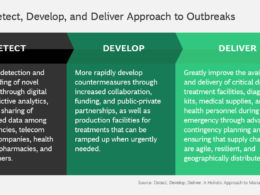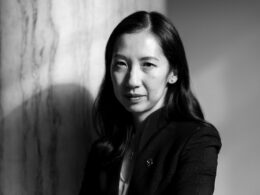The Boston Consulting Group chief says most CEO jobs — and the skills required — have been radically and permanently altered
Wall Street Journal
By Chip Cutter
June 25, 2021
Rich Lesser made a career advising CEOs. His own job as chief executive of Boston Consulting Group showed him the job’s complications up close.
In his nine years leading BCG, Mr. Lesser, 59 years old, oversaw its transformation.
- The firm more than doubled in size to 22,000 employees and
- tripled its revenue by expanding in areas such as digital analytics.
Along the way, he and other CEOs found themselves repeatedly thrust into highly charged political debates-from immigration to voting access-once considered outside the realm of business.
“The role has broadened so much over my tenure,” Mr. Lesser says. “The CEOs I talk to, these issues are so much more on their minds than they were on the minds of CEOs even five years ago.”
Pressure came from all sides. Within BCG, some partners pressed Mr. Lesser to urgently address climate change. Though he says that he personally saw the issue as important, the firm had not made it a priority. “These were partners who were angry at me because they didn’t think I was taking it seriously enough,” he says.
The challenge led to change: BCG committed to reducing greenhouse-gas emissions by cutting full-time employees’ travel by 30% by 2025, and has pledged to cut its net carbon dioxide emissions to zero by 2030. The firm now works with corporate clients on how to reduce emissions inside their companies and from their supply chains.
Trained as a chemical engineer, Mr. Lesser planned a career working on synthetic fuels that would be more environmentally friendly than fossil fuels. But after oil prices collapsed in the early 1980s and energy jobs dried up, he took a position as a process-development engineer with Procter & Gamble Co. , working in soap-manufacturing plants in Cincinnati and elsewhere.
In a preview of his later consulting work, he says he was happiest while wandering P&G’s halls, asking people about their problems.
After business school, Mr. Lesser joined BCG in 1988, rising to CEO in 2013.
He will step down from the role this fall and be succeeded by longtime BCG executive Christoph Schweizer on Oct. 1. Mr. Lesser will stay on to become the firm’s global chair.
Mr. Lesser spoke with The Wall Street Journal about difficult strategy decisions, what he learned about the “CEO bubble,” and the advice he now gives to ambitious consultants hoping to move up.
Questions and answers have been edited for length and clarity.
WSJ: As CEO, with so many issues and people competing for your attention, how do you decide where to prioritize?
Mr. Lesser: Learning, listening and humility. I feel like in any CEO job in today’s world but, in particular, in a place like ours, you have to have a learning mind-set, which means you have to be ready to listen to people-not just the people that you’re the most comfortable with.
Many of the changes that we’ve introduced for sure did not come from ideas that I had. They came from people often having to hound me a few times to get me to hear. But they have to believe that you want to be pushed.
WSJ: Is there an example?
Mr. Lesser: On the digital and analytics side, at different moments in time there were people who would come to me and say: “Big corporations don’t know how to innovate in a digital world. Our client’s analytics are going to be unbelievably important.” Digital analytics today is about 7,000 people out of our 22,000. About 40% of our revenues have a digital, analytics and technology component. So it’s a big part. The year before I became CEO, it was less than 10% of BCG with fewer than 400 people.
But if you read what I wrote to the partners when I was standing to be CEO, the words “digital and analytics” don’t appear one time in 5,000 words. I didn’t see it. Once you’re CEO, you realize, “OK, I didn’t see it before, but this is where the world is going.”
WSJ: So how did you pivot and catch up?
Mr. Lesser: We ran experiments differently. We hired some people we wouldn’t have traditionally hired. We placed bets. We changed our organization structure when we had never changed it before.
We did a whole set of things not because it was my idea or it’s what I came in saying to do, but because you listen and you learn.
When you become CEO, and you have enormous influence over people’s careers, people start sort of screening what they say to you.
And the bubble’s walls get thicker and thicker. You as CEO have to work so hard to make sure that bubble doesn’t grow up around you.
WSJ: What tactics worked for you to break down the “CEO bubble”?
Mr. Lesser: The diversity of the people you surround yourself with matters. As leader, you set the tone based on how you make the hard decisions.
I always had a mind-set that we were going to talk things through, even beyond the point that some people thought, “Rich, just decide.”
I would often carry those discussions a bit longer than some people felt was necessary, but made it clear that we were ready to really engage people-that I wasn’t coming in with the answer.
WSJ: You’ve advised dozens of other leaders. Which parts of the CEO job cause executives the most anxiety?
Mr. Lesser:They’re dealing with things that together have made it a much harder job than it was five or seven years ago.
There’s a level of unpredictability politically.
We’re now living with a pandemic where one day you’re worrying about demand and the next you’re worrying about supply.
Then there’s the multi-stakeholder world.
There’s no less pressure in the performance of the business, but you have to set a high priority on society, the climate, your customers, your employees. Now you’re managing trade-offs across multiple stakeholders, often in ways that are hard to read, often with intense scrutiny around what you say and do.
WSJ: How do you know when to speak up on political issues, and when to stay quiet?
Mr. Lesser: We have tried as a firm and I have tried as an individual to focus on places that are highly aligned with our purpose and values: diversity and inclusion, climate, around Covid and protecting the vulnerable.
And the election where, as an American CEO, I felt like it was appropriate to comment on protecting elections and the sanctity of our democracy.
WSJ: You lead the Business Roundtable’s CEO Covid-19 recovery task force. What should the U.S. and businesses be doing to help end the pandemic?
Mr. Lesser: If I look ahead, first, it’s about doing everything we can to overcome vaccine hesitancy, and doing it in ways that are empathetic and respectful of the people that are hesitant rather than holier than thou. Second, it is about having everybody in the world have an opportunity and be encouraged and supported to get a vaccine by the end of the next year.
WSJ:What advice do you give young consultants hoping to climb the career ladder? I assume your guidance has changed over the years. WSJ: What’s next for you? Any new problems to tackle?
Mr. Lesser: It’s not so different.
My first message is, if you think your education is done, you’re totally wrong. To succeed in today’s world-and in the world over the coming decades-you have to put yourself in a position where you can learn broadly and quickly.
The second is, more than ever before, you have to bring a team mind-set. Be amazing at teaming. It doesn’t mean you don’t lead, but you’re leading in a way that you expect to be challenged.
The third is, understand the ever-increasing role of technology.
They don’t have to come to us as software engineers or computer scientists, but they need to recognize technology is incredibly important.
If they’re passionate about doing great analysis, then they’d better have some data-science fluency.
Mr. Lesser:The two biggest hard problems are first this climate challenge and then the next generation of technologies.
On climate, not to set a climate goal, but to make it a reality, cascade it through your organization, your supply chains and the products you bring customers. We are just scratching the surface of the role innovation can play.
We need to look back and learn from Covid that, even in response to our greatest crisis, when government and business can work together effectively, they can make enormous progress. This has to translate to climate-we need a collaboration between business and government.
Originally published at https://www-wsj-com.cdn.ampproject.org on June 25, 2021.












